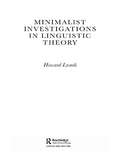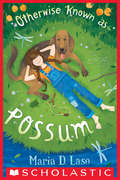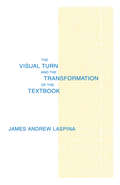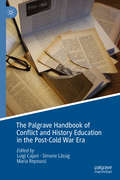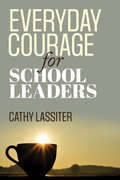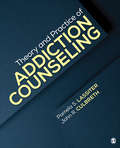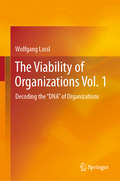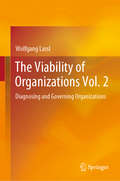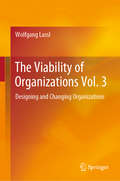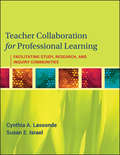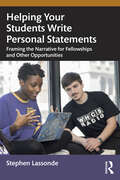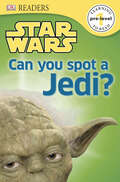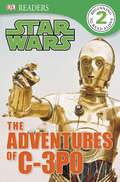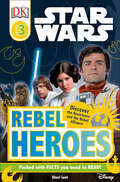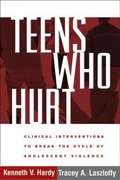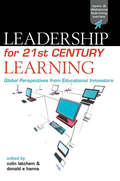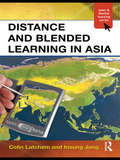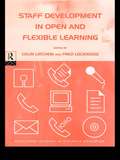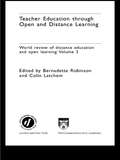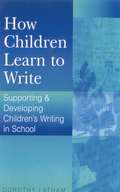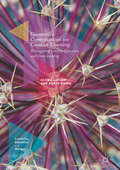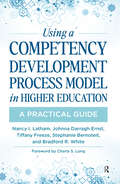- Table View
- List View
Minimalist Investigations in Linguistic Theory (Routledge Leading Linguists #No.8)
by Howard LasnikProfessor Howard Lasnik is one of the world's leading theoretical linguists. He has produced influential and important work in areas such as syntactic theory, logical form, and learnability. This collection of essays draws together some of his best work from his substantial contribution to linguistic theory.
Otherwise Known as Possum (Scholastic Press Novels)
by Maria D. LasoPossum Porter has had it with change. First she lost Mama, leaving a hole nothing can fill. And now, instead of trying to return to some kind of normal, Daddy's sending Possum to school. A real school, where you have to wear SHOES. Where some Yankee teacher will try to erase all the useful things Mama taught Possum during their lessons at home. So Possum comes up with a plan. If she can prove that she already knows everything worth knowing, Daddy will let her quit school and stay where she belongs. She won't have to deal with snooty classmates, or worry about tarnishing Mama's memory. But unfortunately, Possum doesn't shoot to the top of the class like she expected. Even worse, the unmarried Yankee teacher seems to have her eyes on someone . . . Possum's Daddy. With time running out, Possum decides to do something drastic to get away from school-and get Daddy out of Ms. Arthington's clutches-or risk losing everything that's keeping her broken heart glued together.
The Visual Turn and the Transformation of the Textbook
by James A. LaSpinaIs the emerging digital multimedia culture of today transforming the textbook or forever displacing it? As new media of transmission enter the classroom, the traditional textbook is now caught up in a dialogue reshaping the textual boundaries of the book, and with it the traditional modes of cognition and learning, which are bound more to language than to visual form. Most of the important work in the past two decades in the field of curriculum has focused on the culture of the textbook. A rich literature has evolved around textbooks as the traditional object of instructional activity. This volume is an important contribution to this literature, which focuses on the actual making of a textbook. This design process serves as a metaphor that suggests new paradigms of learning and instruction, in which text content is but one component in a multidimensional information space.The Visual Turn is an exploration along the border of this new learning space transforming the traditional center of instruction in the classroom.
The Palgrave Handbook of Conflict and History Education in the Post-Cold War Era
by Simone Lässig Luigi Cajani Maria RepoussiThis Handbook provides a systematic and analytical approach to the various dimensions of international, ethnic and domestic conflict over the uses of national history in education since the end of the Cold War. With an upsurge in political, social and cultural upheaval, particularly since the fall of state socialism in Europe, the importance of history textbooks and curricula as tools for influencing the outlooks of entire generations is thrown into sharp relief. Using case studies from 58 countries, this book explores how history education has had the potential to shape political allegiances and collective identities. The contributors highlight the key issues over which conflict has emerged – including the legacies of socialism and communism, war, dictatorships and genocide – issues which frequently point to tensions between adhering to and challenging the idea of a cohesive national identity and historical narrative.Global in scope, the Handbook will appeal to a diverse academic audience, including historians, political scientists, educationists, psychologists, sociologists and scholars working in the field of cultural and media studies.
Everyday Courage for School Leaders
by Dr Cathy J. LassiterDevelop and enhance Leadership Courage to exceed every expectation! Everyday Courage for School Leaders examines the inner strength, will power, and resilience with which principals and administrators can face the daily challenges and expectations of educating all students. Based on three foundational ideas at the core of courage, this thought-provoking guide includes: • How to Take Action: make specific plans to activate moral courage, intellectual courage, empathetic courage, and disciplined courage • Daily Practices: exercises in accountability, trust, and risk-taking maintain courageous leadership for equity, excellence, and inclusion • Courage Quotient: assess and consider your areas of strength and opportunities for growth
Everyday Courage for School Leaders
by Dr Cathy J. LassiterDevelop and enhance Leadership Courage to exceed every expectation! Everyday Courage for School Leaders examines the inner strength, will power, and resilience with which principals and administrators can face the daily challenges and expectations of educating all students. Based on three foundational ideas at the core of courage, this thought-provoking guide includes: • How to Take Action: make specific plans to activate moral courage, intellectual courage, empathetic courage, and disciplined courage • Daily Practices: exercises in accountability, trust, and risk-taking maintain courageous leadership for equity, excellence, and inclusion • Courage Quotient: assess and consider your areas of strength and opportunities for growth
Theory and Practice of Addiction Counseling
by Dr Pamela S. Lassiter Dr John R. CulbrethTheory and Practice of Addiction Counseling by Pamela S. Lassiter and John R. Culbreth brings together contemporary theories of addiction and helps readers connect those theories to practice using a common multicultural case study. Theories covered include motivational interviewing, moral theory, developmental theory, cognitive behavioral theories, attachment theory, and sociological theory. Each chapter focuses on a single theory, describing its basic tenets, philosophical underpinnings, key concepts, and strengths and weaknesses. Each chapter also shows how practitioners using the theory would respond to a common case study, giving readers the opportunity to compare how the different theoretical approaches are applied to client situations. A final chapter discusses approaches to relapse prevention.
Theory and Practice of Addiction Counseling
by Dr Pamela S. Lassiter Dr John R. CulbrethTheory and Practice of Addiction Counseling by Pamela S. Lassiter and John R. Culbreth brings together contemporary theories of addiction and helps readers connect those theories to practice using a common multicultural case study. Theories covered include motivational interviewing, moral theory, developmental theory, cognitive behavioral theories, attachment theory, and sociological theory. Each chapter focuses on a single theory, describing its basic tenets, philosophical underpinnings, key concepts, and strengths and weaknesses. Each chapter also shows how practitioners using the theory would respond to a common case study, giving readers the opportunity to compare how the different theoretical approaches are applied to client situations. A final chapter discusses approaches to relapse prevention.
The Viability of Organizations Vol. 1: Decoding the "DNA" of Organizations
by Wolfgang LasslToday’s complexity, speed, and need for adaptation are putting organizations under stress. Understanding how organizations function and truly come alive has become a critical competency. And yet, organizations still seem to lack a solid understanding of what constitutes meaningful, viable, and effective organizational structures. Using the Viable System Model (VSM) as a framework, this three-volume compendium volume offers readers a new and comprehensive perspective on organizations and how they function beyond the organizational chart. Moreover, it equips readers with a rigorous methodology for analyzing organizations and addressing deep-seated organizational dysfunctions, while also showing them how to redesign their structures and develop better and more tailor-made solutions. This first volume introduces readers to the VSM and its main components. Readers are taken on a journey, allowing them to rediscover all-too-familiar aspects in the life of their organization and to become aware of the critical success factors for its smooth functioning and long-term viability. In turn, volumes 2 and 3 provide an in-depth introduction to diagnosing and designing organizations with the help of the VSM. For academics, this compendium rediscovers a theoretical perspective that can help them understand macro-structural issues; at the same time, for VSM experts and researchers alike, it resolves many open aspects in the VSM framework.
The Viability of Organizations Vol. 2: Diagnosing and Governing Organizations
by Wolfgang LasslOrganizations are complex social systems, and dysfunctionalities can settle in very quickly and almost unnoticed, costing valuable time and resources. In a highly volatile and complex world where mistakes are virtually unforgivable, the ability to rapidly and accurately diagnose dysfunctionalities, and familiarity with the right governance and leadership principles, have thus become vital for organizations’ success.This volume, the second in a set of three, introduces readers to the Viable System Model (VSM)-based diagnosis and governance of organizations. Readers will be familiarized with a broad range of dysfunctional patterns that can impede an organization’s viability, while also deepening their understanding of organizational viability gained in Volume 1. This volume examines in detail the highly dynamic nature of organizations, the multiple equilibrium systems that need to be kept in mind, and the intricate nature of leadership in organizations. It addresses fundamental organizational and managerial issues/topics such as the functioning of hierarchies, the “right” degree of centralization, the various challenges throughout an organization’s lifecycle, and the vital role of conflicts for organizational health.The insights derived from the VSM in this volume will provide readers with a comprehensive, nuanced, and sound conceptual foundation for questions concerning the diagnosis and governance of organizations, the tasks, challenges and principles of leadership, and the implementation of strategies in organizations.
The Viability of Organizations Vol. 3: Designing and Changing Organizations
by Wolfgang LasslThe design process for organizational structures sometimes resembles a random walk, especially when it is embedded in an arena of competing personal interests and power games. Many organizations still lack clear guidance and are therefore seeking a rigorous, nuanced, and impartial methodology for the design and development of their organizational structures, processes and behavioral repertoire. The Viable System Model (VSM) can help: by identifying the essential design principles and parameters that need to be considered, and which can be used to enhance an organization’s effectiveness, adaptability, cohesion and overall viability.This book, the third volume in a set of three, connects the VSM to the world of the standard organizational chart. It offers readers a new perspective on corporate functions and their contributions to the organization as a whole. Further, it shows them how the VSM can be used to develop viable organizational structures, following a detailed step-by-step approach. Lastly, it explains the vital processes, behaviors, and attitudes that need to be developed in order to make organizations truly viable.Readers will find solutions to, and guidelines on, many critical organizational design issues, e.g. designing job profiles; correctly mapping synergistically (“centrally”) operating units in the organizational chart; outsourcing processes; and handling matrix situations; as well as designing and implementing organizational change processes.
Teacher Collaboration for Professional Learning
by Cynthia A. Lassonde Janice F. Almasi Susan E. IsraelTeacher Collaboration for Professional Learning contains the essential information, tools, and examples teachers and school leaders need to create, manage, and sustain successful collaborative groups. Designed to be a hands-on resource, this practical guide shows you how to: Advocate for collaborative teacher learning Develop and sustain collaborative research groups Organize and conduct productive research projects Address issues of ethics, leadership, and group dynamics Evaluate and sustain collaborative learning activities Based on data from a major survey, Teacher Collaboration for Professional Learning features extensive case examples from model research communities collaborating within schools, across districts, in partnership with universities, and as online networks. The book also offers a wealth of reproducible templates as well as reflection questions and exercises?invaluable tools for organizing study groups.
Helping Your Students Write Personal Statements: Framing the Narrative for Fellowships and Other Opportunities
by Stephen LassondeThis practical book is a timely and comprehensive guide designed for college advisors and instructors who are supporting and coaching students into successful internships, fellowships, graduate programs, and professional schools. This book emphasizes the most important part of any application, the personal statement: how to prepare to write it, how to draft it, how to revise it—and why to invest time in the process of developing it. Helping Your Students Write Personal Statements analyzes the components of the effective personal statement and provides examples from many successful essays by actual college students, as well as exercises for students. It also gives advisors the tools to help engage students who might not ordinarily consider themselves credible candidates for nationally competitive fellowships. This book uniquely takes a developmental approach, offering college advisors and teachers a concrete, step-by-step plan to help any student craft the best, most persuasive personal statement they can write, helping transform their students into compelling, competitive candidates.
DK Readers L0: Find Out How to Tell a Droid from a Jedi! (DK Readers Pre-Level 1)
by Shari LastDK's Star Wars Readers are packed full of images, new information, familiar character poses, and fascinating facts to engage young fans. Imaginative heroes and villains and exciting adventure themes, combined with DK's nonfiction approach, encourage reluctant readers. Can You Spot a Jedi? Now young readers will identify their favorite Star Wars character and vehicles in this all new Level 1 reader, Star Wars: Can You Spot a Jedi? With simple sentences and a picture glossary, children will learn to read and begin their journey through the Star Wars galaxy.
DK Readers L2: Star Wars: The Adventures of C-3PO (DK Readers Level 2)
by Shari LastDK's Star Wars Readers are packed full of images, new information, familiar character poses, and fascinating facts to engage young fans. Imaginative heroes and villains and exciting adventure themes, combined with DK's nonfiction approach, encourage reluctant readers. In this all new Level 2 reader, children join the adventures of everyone's favorite droid C-3PO as he and his buddy R2-D2 travel the galaxy. With longer sentences and a simple index, beginner readers will have loads of fun learning about Star Wars while learning how to read in Star Wars: The Adventures of C-3PO.
DK Readers L3: Discover the Resistance and the Rebel Alliance (DK Readers Level 3)
by Shari LastDK Readers L3: Star Wars™: Rebel Heroes combines DK's four-level reading scheme with the record-breaking Star Wars movies, helping kids learn how to read—and learn to love reading. Young readers will learn about the most daring rebels and members of the Resistance in the Star Wars galaxy, including Poe Dameron, Princess Leia, Rey, Han Solo, Luke Skywalker, Ezra Bridger, and more!Perfect for 7–9 year olds starting to read alone, Level 3 titles include in-depth information presented through more complex sentence structure with increasing amount of text to expand the reader's general knowledge and confidence in reading. Additional information spreads are full of extra facts, developing the topics through a range of nonfiction presentation styles, such as fliers, instructions, and record-breaker statistics.© & TM 2016 LUCASFILM LTD. Used Under Authorization.
DK Readers L3: Discover the Resistance and the Rebel Alliance (DK Readers Level 3)
by Shari LastDK Readers L3: Star Wars™: Rebel Heroes combines DK's four-level reading scheme with the record-breaking Star Wars movies, helping kids learn how to read—and learn to love reading. Young readers will learn about the most daring rebels and members of the Resistance in the Star Wars galaxy, including Poe Dameron, Princess Leia, Rey, Han Solo, Luke Skywalker, Ezra Bridger, and more!Perfect for 7–9 year olds starting to read alone, Level 3 titles include in-depth information presented through more complex sentence structure with increasing amount of text to expand the reader's general knowledge and confidence in reading. Additional information spreads are full of extra facts, developing the topics through a range of nonfiction presentation styles, such as fliers, instructions, and record-breaker statistics.© & TM 2016 LUCASFILM LTD. Used Under Authorization.
Teens Who Hurt
by Tracey A. Laszloffy Kenneth V. HardyOffering a fresh perspective on treatment, this book presents an overarching framework and many specific strategies for working with violent youth and their families. The authors shed light on the complex interplay of individual, family, community, and societal forces that lead some adolescents to hurt others or themselves. Effective ways to address each of these factors in clinical and school settings are discussed and illustrated with evocative case material. The book provides essential guidance on connecting with aggressive teens and their parents and managing difficult situations that are likely to arise. The strengths-based interventions presented are applicable to a broad range of high-risk behaviors, from bullying and assault to substance abuse, self-mutilation, and suicidality.
Leadership for 21st Century Learning: Global Perspectives from International Experts (Open and Flexible Learning Series)
by Colin Latchem Donald E HannaThe challenge of managing education effectively is formidable. Written by two education managers, this text explores the issues associated with good leadership in educational and training institutions. It is based on their own work and on a series of detailed interviews with eminent leaders.
Distance and Blended Learning in Asia (Open and Flexible Learning Series)
by Colin Latchem Insung JungDistance and Blended Learning in Asia is a unique and comprehensive overview of open, distance learning (ODL) and information and communication technology (ICT) in Asian education and training. Broad in coverage, this book critically examines ODL and ICT experiences from Japan to Turkey and from Sri Lanka to Mongolia – drawing conclusions from the successes and failures, and recommending ways in which planning, management and practice may be developed for the world’s largest concentration of adult open and distance learners. This pioneering book draws on Asian theory, research and practice to identify the strengths, weaknesses and challenges in all sectors of Asian education and training. It critically and insightfully discusses the ideas, skills and practices that are necessary to advance knowledge in leadership and management, professional development, innovation and quality assurance and research and diffusion. Distance and Blended Learning in Asia provides an insightful, informative and critical review of ODL / ICT developments in schools, open schooling, colleges, universities, workplace training, professional development and non-formal adult and community education. The book is an invaluable reference for ODL / ICT professionals, educators and students anywhere in the world, and is essential reading for all of those involved in ODL / ICT in Asia.
Staff Development in Open and Flexible Education
by Colin Latchem Fred LockwoodAs institutions and organisations around the world move to more open and flexible delivery of educational and training programmes, there is increasing need for effective forms of staff development to encourage and support change. Staff development is not only critical in helping teachers and trainers acquire and improve their knowledge and skills in alternative modes of delivery, but in helping to shape the policies, procedures and attitudes that are needed for more learner-centred approaches. This book draws together the experiences, insights and findings of some of the world's leading staff developers in open and flexible education. It is designed to provide an overview of the trends, influences and events which are shaping the work of these professionals, and the policy changes, processes and outcomes they are helping to bring about in this expanding field. The book offers various frameworks and strategies for staff development activities, with examples from commercial, professional and educational settings, and shows how these can be refined and adapted to more specific contexts.
Teacher Education Through Open and Distance Learning: World review of distance education and open learning Volume 3 (World Review Of Distance Education And Open Learning Ser. #Vol. 4)
by Colin Latchem Bernadette RobinsonHow can open and distance learning and information and communications technology (ICT) provide us with more - and better - teachers?Open and distance learning is increasingly used in teacher education in developing and developed countries. It has the potential to strengthen and expand the teaching profession of the twenty-first century and to help achieve the target of education for all by 2015. Teacher Education Through Open and Distance Learning examines the case for using open and distance learning and ICT to train our educators. It describes and analyses the ways in which these methods and technologies are used for:*initial teacher training and continuing professional development*training principals and school managers*training those who provide non-formal adult and community education*communities of practice and sharing of knowledge and ideas within the teaching professionIt also discusses the policy-making, management, technology, costing, evaluation and quality assurance aspects of this work. The contributors are outstanding practitioners in the field. The first review in over a decade, Teacher Education Through Open and Distance Learning draws on wide-ranging and international experience to summarise the strengths and weaknesses of new approaches to the education of teachers. It offers invaluable guidance to policymakers, planners, headteachers and teachers.
How Children Learn to Write: Supporting and Developing Children's Writing in School
by Dorothy Latham`This book is a useful addition to any staff library. What makes it different to many other similar books is that it shows teachers that speaking, listening and reading create the foundations for writing. Tested in schools, staff said: "It is a very useful framework for action-research based upon secure theory. When deciding classroom strategies, it is easy to find what you are looking for and the chapter summaries are very helpful. Some of the staff development and training suggestions are very practical and we are trying them out. We found the emphasis upon class novels and the class discussion that follows, very important, especially when linked to the excellent examples of children's writing." This book may appear to some as theoretical and 'academic', but this is why it will be valuable. It does what the title says because it shows how children learn to write. It starts at the beginning and saves diving into the latest trend. Perhaps its best recommendation is that every school that was asked to look at it said, `It's good and we have ordered a copy' - John Lilly, independent education consultant `The chapter on the Taxonomy of Writing Purposes will be useful for planning and those on extending and enhancing writing will definitely be helpful in many day-to-day situations' - Nicholas Bielby, Times Educational Supplement This book outlines the processes which are involved when children learn to write. The author shows how certain strategies can improve children's progress in writing. Dealing with the age range three to 13, the book addresses issues to do with: - the gender gap - children with English as an additional language - left-handedness Dorothy Latham includes ideas for sound and easy ongoing assessment of writing. The book is written in line with the requirements of the English National Curriculum and The National Literacy Strategy Framework for England, but is not limited to them. Topics also covered include: - brain development and structures - the acquisition of speech - language and thinking - working memory - secretarial skills - stages in compositional development - writing purposes and cross-curricular applications - strategies for improving self-generated writing - using reading to improve writing - using speech and drama to improve writing and - ten ways to improve children's writing. This book is for serving teachers in schools wishing to study the subject in further depth, and as a source book for students. Useful for school-based staff INSET, it provides simple activities for teachers to do and discuss.
Generative Conversations for Creative Learning
by Gloria Latham Robyn EwingThis book builds on conversations between the author educators and other experts in the field, including authors, illustrators and teachers, to explore the benefits of discussions around quality literature within a classroom context that exercises the imagination and generates new ideas and discoveries. The book focuses on a range of strategies that can be utilised to reimagine literacy learning in a 21st century context including parent and teacher talk; active listening; fostering student driven questions; building vocabulary and imagery; and metacognitive talk. These are argued to have a hugely beneficial impact on how children learn to solve problems, engage in complex thought processes, negotiate meaning, as well as learning how to wonder, explore, create and defend ideas. The book also defends the importance of parents, teachers and academics as 'storytellers', using their bodies and voices as instruments of engagement and power. It will make compelling reading for students, teachers and researchers working in the fields of education and sociology, particularly those with an interest in creative methods for improving literacy.
Using a Competency Development Process Model in Higher Education: A Practical Guide
by Nancy Latham Johnna Darragh Ernst Tiffany Freeze Stephanie Bernoteit Bradford WhiteWhat if educational programs designed curriculum with the end in mind, teaching and assessing only the knowledge and skills necessary for success in the workplace and broader life applications? Competency-Based Education (CBE) provides an answer to questions such as this one that key stakeholders such as employers, learners, parents, and educators are asking. In this book, the authors offer a Competency Development Process Model (CDPM) with unique features that emphasize the interdependence of competencies, assessments, and a robust learning journey within a fully developed career pathway. Two case examples are used throughout the book to contextualize the CDPM. There are seven steps of the model: ·Step 1: Define the Problem·Step 2: Establish the Competency Framework·Step 3: Draft the Competency Statements·Step 4: Establish Competency Measurability·Step 5: Develop Competency Assessments·Step 6: Adopt and Implement Competencies in Learning Journey and Credentialing Systems·Step 7: Evaluate Impact Over TimeThe model addresses the importance of situating competencies within a professional learning context using a backward design approach. In doing so, the model aims to elevate the work of designing competencies from merely developing a list of expectations to in-depth analysis and design, with the goal of developing competencies that can be readily used for assessment and career pathway development.Each step in the CDPM is treated as a chapter, and each chapter identifies the central question that must be answered, provides an overview of the tasks in the step, and illustrates the steps in action through the two case examples. Each chapter concludes with “Your Turn”—guiding questions for the reader to apply the step to their own context.
